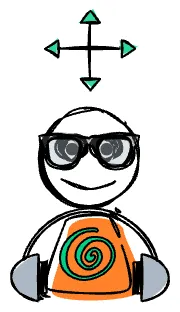The Energetics of Depression
Depression: to press down, lower; to dispirit or sadden.
The word comes from the Latin 'deprimere' and literally means 'to press down'
"We can think of depression as something 'pressing down' on us."
Depression can be viewed as a weight that presses down on an individual's thoughts, emotions, and motivation.
This pressing down can lead to feelings of hopelessness, fatigue, and a diminished ability to experience joy.
The concept of being pressed down highlights how depression can stifle one's sense of self and potential, creating a barrier to engaging fully with life.

"Can you feel the weight of depression pressing down on you?"
The concept of pressure involves the application of force over an area, (the smaller the area the greater the pressure), which can lead to deformation or failure of materials.
This parallels the experience of depression, where internal and external pressures weigh heavily on an individual, potentially leading to emotional and psychological breakdowns.
Just as engineers must design structures to withstand pressure, individuals need strategies to manage the pressures that contribute to depression.
Depression and Pressure
The derivation (where the word came from) of depression as something 'pressing down' emphasises its constrictive (link to stress) and suffocating nature.
This conceptual understanding can be applied in several ways:
1. Emotional Weight: Depression often feels like an emotional burden, pressing down on one's ability to feel positive emotions or engage with the world.
2. Cognitive Suppression: Depressive thoughts can suppress creativity and problem-solving abilities, much like pressure can flatten or deform a material.
3. Physical Manifestation: Depression can manifest physically, with symptoms such as fatigue, lethargy, and a sense of heaviness in the body.
What Can We Do...
By addressing the pressing elements of depression, we can work towards lifting the emotional and psychological weight, fostering resilience and healing.
Looking at it from an 'energetic perspective' -- we can:
Release the pressure (release)
Reverse the pattern (balance)
Reduce the counterforce (reaction to response)
Increase flow in desired direction (intentional thoughts)
Apply adaptive measures = reengineer (identity)
This is the essence of DSA -- once you can 'See' (mind) and 'Feel' (body) the nature of your problem, you can apply it's opposite to return to a Neutral State.
Then, when you're ready, you can start to imagine and engage with a new potential state.
This can all be done energetically, using our mind to guide the changes needed, while our body’s natural receptive centres allow us to feel if and when change is occurring.
But, in order to know if a change has occurred, we must first know what we are dealing with.
We have to know who, what and where we are — before we can know who, what and where we want to be.

"Ready for more?"
Check out this short audio:
Perspective — Change Starts With A Shift In Perspective
When you're ready...